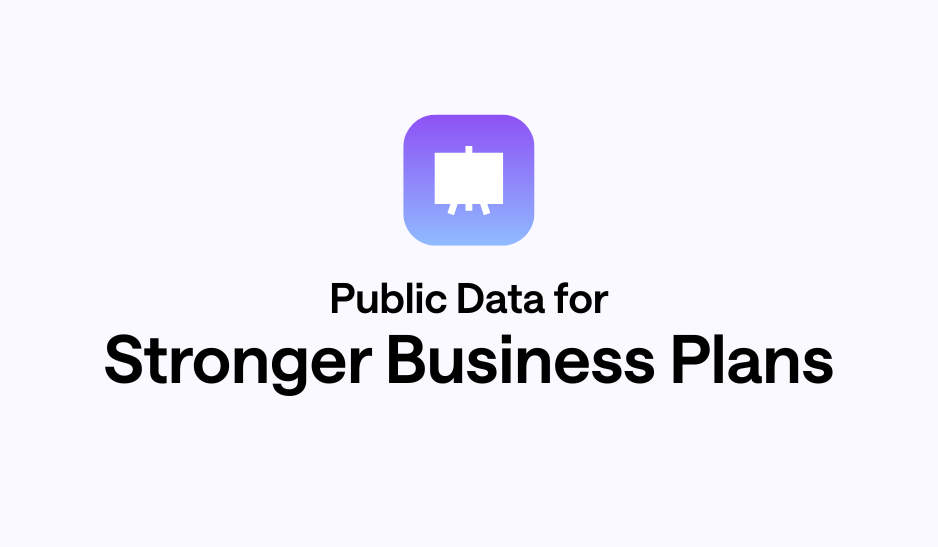What Is Public Data? Make Smarter Decisions and Unlock Deeper Insights
In 2025, data is everywhere, influencing nearly every aspect of our lives. From weather forecasts to traffic updates, information flows constantly. Much of this information, often without us realizing it, is public data. Simply put, it's information collected, maintained, or distributed by public entities (like governments) that's accessible to everyone. It's fundamental to transparency and informed decision-making, offering valuable insights waiting to be discovered.
This post will clarify what public data is, explore its evolution, what it encompasses in the US today, and why it can be both incredibly valuable and sometimes complex to use. We'll detail its inherent trustworthiness and look at how new advancements are making this vast amount of information more accessible than ever, empowering individuals and organizations across the US to unlock its true potential.
Public Data's Evolution: From Concept to Everyday Tool
The concept of public data isn't new. For centuries, governments have collected information about their populations and economies. However, the modern understanding and accessibility of public data have evolved significantly, especially in the United States.
Its current prominence stems from several key factors. First, the sheer volume of data generated globally has expanded dramatically. Every transaction, online interaction, and sensor reading contributes to an ever-growing digital footprint.
Second, there's been a strong push towards government transparency and open governance. Laws like the Freedom of Information Act (FOIA) in the US have opened access to government-held information. Finally, technological advancements in data storage, processing, and access (like cloud computing and APIs) have made it much easier to collect, organize, and distribute large datasets.
.png?width=3200&height=2400&name=In%20Post%20Blog%20Images%20(2).png)
The Building Blocks of US Public Data: Clear Explanations
At its core, Public Data is information collected, organized, and disseminated by governmental bodies or other public institutions, legally available for public consumption. This accessibility is vital for a transparent society, allowing citizens, businesses, and researchers to understand various aspects of their communities and the nation.
Examples of US Public Data
The United States is a rich source of public data, covering a wide array of topics. Here are some prominent examples:
- US Census Data and Demographics: The US Census is a foundational example of public data. Conducted every ten years, it collects vital demographic information about the US population, including age, sex, race, ethnicity, household composition, and housing characteristics. This data is essential for everything from congressional redistricting to understanding consumer behavior and planning public services. Beyond the decennial census, the American Community Survey (ACS) provides ongoing, detailed demographic and socioeconomic data.
- Economic Data: Agencies like the Bureau of Labor Statistics (BLS) and the Bureau of Economic Analysis (BEA) publish extensive economic data. This includes employment statistics (unemployment rates, job growth by sector), inflation rates (Consumer Price Index), Gross Domestic Product (GDP), and trade balances. Businesses use this to forecast market trends, and policymakers rely on it to guide economic decisions.
- Environmental Data: The Environmental Protection Agency (EPA) and the National Oceanic and Atmospheric Administration (NOAA) provide comprehensive environmental data. This includes air quality reports, water quality measurements, climate change indicators, weather patterns, and pollution levels. This data is crucial for environmental research, public health initiatives, and disaster preparedness.
- Crime Statistics: The FBI's Uniform Crime Reporting (UCR) Program collects data from law enforcement agencies across the US on various types of crime, including violent crimes and property crimes. This information helps communities understand crime trends, inform policing strategies, and assess public safety.
- Transportation Data: The Department of Transportation (DOT) provides data on road conditions, traffic volumes, public transit usage, and accident statistics. This is vital for urban planning, infrastructure development, and understanding commuter behavior.
- Health Data: The Centers for Disease Control and Prevention (CDC) offers a vast repository of public health data, including disease prevalence, mortality rates, vaccination coverage, and health risk behaviors. This data is essential for public health interventions and understanding the health landscape of the nation.
- Education Data: The National Center for Education Statistics (NCES) provides data on schools, colleges, enrollment rates, graduation rates, and educational attainment. This helps educators, policymakers, and parents understand the state of education in the US.
-1.png?width=3200&height=1526&name=In%20Post%20Blog%20Images%20(3)-1.png)
Why Public Data Can Be Complex to Use
Despite its significant value, working with public data can present challenges:
- Data Quality Considerations: While compiled with care, large datasets can sometimes have missing information or inconsistencies, requiring careful handling during analysis.
- Fragmentation Across Sources: Public data is often spread across numerous government websites, agency portals, and academic archives. This can make it time-consuming to gather all the relevant information for a complete analysis.
- Technical Access Complexity: Although publicly available, accessing some datasets isn't always simple. Many are available as raw files (CSV, XML, JSON), which require technical skills to organize. Others might only be accessible via Application Programming Interfaces (APIs), which require coding knowledge.
- Lack of Standardization: Different agencies may collect similar data but use varying methodologies or reporting standards. This can make it challenging to compare and combine datasets effectively.
- Sheer Volume of Data: The scale of public data can be substantial. For instance, the full US Census data is enormous, making it difficult for individuals and teams to download, process, and analyze without specialized tools.
Inherent Trustworthiness of Public Data
Assessing the trustworthiness of public data is paramount. Generally, US government data is considered highly reliable due to rigorous collection methods, standardized protocols, and a commitment to accuracy. Agencies like the US Census Bureau and the Bureau of Labor Statistics employ sophisticated statistical methodologies to ensure data integrity.
When evaluating public data, consider the following:
- Source Credibility: Is the data from a reputable government agency or a well-known research institution? Official government sources are typically the most reliable.
- Methodology: Does the source clearly explain its data collection methods and any limitations? Transparency in methodology supports trust.
- Timeliness: Is the data current and relevant to your needs?
- Transparency: Is the data accompanied by documentation and contact information for inquiries?
- Review Processes: Has the data undergone internal review or external audits?
Understanding how the data was collected and its context is crucial for drawing accurate conclusions.
Unlocking Value: Public Data's Impact on Decision-Making
For many professionals, the sheer volume and fragmented nature of public data represent a significant hurdle.
A small business owner trying to understand demographic shifts in their target neighborhoods, or a local government official attempting to optimize public services based on community needs, often faces challenges. The traditional process involves gathering data from many sources, cleaning it, and then attempting to analyze it, a manual, time-consuming, and often frustrating endeavor, especially for those without specialized technical skills.
This difficulty in interpreting large public datasets, combined with manual processes for data analysis and a lack of user-friendly tools, means that much of the valuable insight within public data remains unused.
This is where a significant change is occurring.
Advancements in data processing and Artificial Intelligence (AI) are fundamentally changing how we interact with public data, driving a move from laborious manual analysis to automated, insight-driven approaches. Emerging platforms like Cambium AI are leading this transformation.
Cambium AI leverages advanced AI to allow users to ask natural language questions about vast public datasets, instantly generating clear visualizations and actionable insights.
Imagine a tool that transforms the complex process of sifting through raw Census data into simply asking, "Compare educational attainment across Florida and New York," and getting immediate, relevant visualizations and analysis.
This type of solution directly addresses the traditional barriers of technical expertise and time, making public data accessible for everyone, not just data specialists.
.png?width=3200&height=2400&name=In%20Post%20Blog%20Images%20(4).png)
Real-World Benefits Across the US Landscape
The move toward more accessible public data, enhanced by AI, brings clear benefits to various US sectors and roles:
- Businesses: For businesses, public data is a strategic advantage. Retailers can identify optimal locations for new stores by analyzing foot traffic, population density, and local economic indicators. Marketing teams can understand regional consumer preferences and tailor campaigns more effectively. By using tools like Cambium AI, even small businesses can quickly analyze demographic shifts to forecast demand for new products or services in specific areas, without needing an in-house data analytics team. This leads to smarter investments and more targeted growth.
- Researchers: Academics and researchers can delve deeper into complex societal issues. Social scientists can study migration patterns, educational attainment, or income inequality with greater ease, leading to robust policy recommendations and a richer understanding of human behavior. The ability to ask plain-English questions of large datasets speeds up the research process, allowing for more hypotheses to be tested and discoveries to be made.
- Government Agencies: Public data is fundamental to effective governance. Local and state governments can optimize resource allocation by understanding community needs, such as identifying areas with high concentrations of elderly residents for senior services, or areas with young families requiring new schools. Transportation departments can analyze traffic data to improve infrastructure and alleviate congestion. Tools that simplify the analysis of public data enable agencies to improve public service delivery and make evidence-based decisions that directly benefit their communities.
- Non-profits: Non-profit organizations can more effectively identify areas of greatest need for outreach and measure the impact of their programs. A non-profit focused on combating food insecurity, for instance, could use public data on poverty levels and access to healthy food to pinpoint communities most in need of their services. This allows them to allocate resources more efficiently and demonstrate their impact to donors and stakeholders with clear, data-driven evidence.
The Future Outlook: Empowering Smarter, Faster Decisions for Everyone
Public data will increasingly serve as a key enabler across the US. The growing accessibility of this information, largely driven by user-friendly platforms like Cambium AI, will empower smarter, faster decisions across a multitude of industries and sectors.
The future of public data is one where information is not just available, but truly accessible and understandable for everyone.
Start your free trial today..png)

